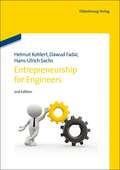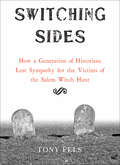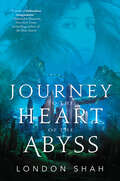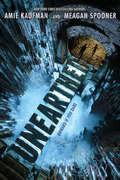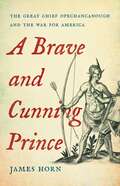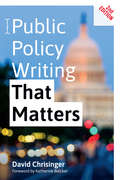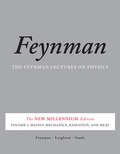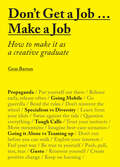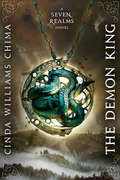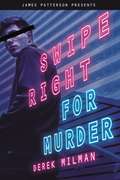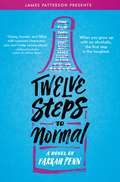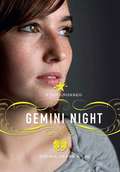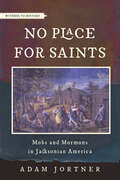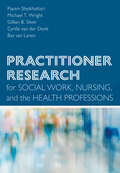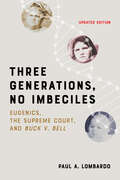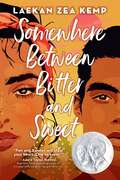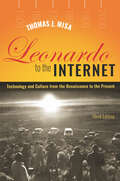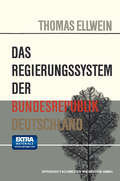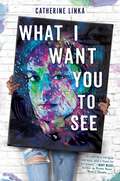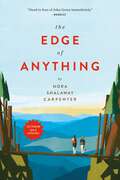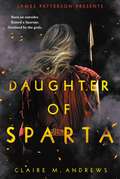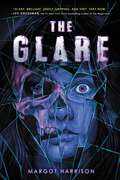- Table View
- List View
Entrepreneurship For Engineers
by Helmut Kohlert Dawud Fadai Hans-Ulrich SachsThe objective of this book is to provide future entrepreneurs in start-up companies, medium-sized enterprises, and corporations with knowledge and a set of tools that they can immediately use to develop their entrepreneurial mindset. The book has a clear focus on the needs of engineers; it covers business cases, experiences from entrepreneurs, and examples from industry to optimize the learning benefit.
Switching Sides: How a Generation of Historians Lost Sympathy for the Victims of the Salem Witch Hunt
by Tony FelsFor most historians living through the fascist and communist tyrannies that culminated in World War II and the Cold War, the Salem witch trials signified the threat to truth and individual integrity posed by mass ideological movements. Work on the trials produced in this era, including Arthur Miller;€™s The Crucible and Marion L. Starkey;€™s The Devil in Massachusetts: A Modern Enquiry into the Salem Witch Trials, left little doubt that most intellectuals;€™ sympathies lay with the twenty innocent victims who stood up to Puritan intolerance by choosing to go to their deaths rather than confess to crimes they had never committed.In Switching Sides, Tony Fels traces a remarkable shift in scholarly interpretations of the Salem witch hunt from the post;€“World War II era up through the present. Fels explains that for a new generation of historians influenced by the radicalism of the New Left in the 1960s and early 1970s, the Salem panic acquired a startlingly different meaning. Determined to champion the common people of colonial New England, dismissive toward liberal values, and no longer instinctively wary of utopian belief systems, the leading works on the subject to emerge from 1969 through the early 2000s highlighted economic changes, social tensions, racial conflicts, and political developments that served to unsettle the accusers in the witchcraft proceedings. These interpretations, still dominant in the academic world, encourage readers to sympathize with the perpetrators of the witch hunt, while at the same time showing indifference or even hostility toward the accused.Switching Sides is meticulously documented, but its comparatively short text aims broadly at an educated American public, for whom the Salem witch hunt has long occupied an iconic place in the nation;€™s conscience. Readers will come away from the book with a sound knowledge of what is currently known about the Salem witch hunt;¢;‚¬;€?and pondering the relationship between works of history and the ideological influences on the historians who write them.
Journey to the Heart of the Abyss (Light the Abyss #2)
by London ShahThe sequel to London Shah's thrilling futuristic mystery The Light at the Bottom of the World, perfect for fans of Illuminae and These Broken StarsLeyla McQueen has finally reunited with her father after breaking him out of Broadmoor, the illegal government prison—but his freedom comes at a terrible cost. As Leyla celebrates his return, she must grapple with the pain of losing Ari. Now separated from the boy who has her heart and labeled the nation&’s number one enemy, Leyla must risk illegal travel through unchartered waters in her quest for the truth behind her father's arrest.Across Britain, the fallout from Leyla's actions has escalated tensions between Anthropoid and non-Anthropoid communities, bringing them to an all-time high. And, as Leyla and her friends fight to uncover the startling truths about their world, she discovers her own shocking past—and the horrifying secrets behind her father&’s abduction and arrest. But as these long-buried truths finally begin to surface, so, too, do the authorities&’ terrible future plans. And if the ever-pervasive fear prevents the people from taking a stand now, the abyss could stay in the dark forever.
Unearthed (Unearthed #1)
by Amie Kaufman Meagan SpoonerFrom the New York Times best-selling author duo Amie Kaufman and Meagan Spooner comes a "literally breathtaking" new sci-fi series about a death-defying mission on an alien planet. Now in paperback!When Earth intercepts a message from a long-extinct alien race, it seems like the solution humanity has been waiting for. The Undying's advanced technology has the potential to undo environmental damage and turn lives around, and their message leads to the planet Gaia, a treasure trove waiting to be explored.For Jules Addison and his fellow scholars, the discovery of an ancient alien culture offers unprecedented opportunity for study . . . as long as scavengers like Amelia Radcliffe don't loot everything first. Despite their opposing reasons for smuggling themselves onto the alien planet's surface, they're both desperate to uncover the riches hidden in the Undying temples. Beset by rival scavenger gangs, Jules and Mia form a fragile alliance . . . but both are keeping secrets that make trust nearly impossible.As they race to decode the ancient messages, Jules and Mia must navigate the traps and trials within the Undying temples and stay one step ahead of the scavvers on their heels. They came to Gaia certain that they had far more to fear from their fellow humans than the ancient beings whose mysteries they're trying to unravel. But the more they learn about the Undying, the more Jules and Mia start to feel like their presence in the temple is part of a grand design -- one that could spell the end of the human race . . .
A Brave and Cunning Prince: The Great Chief Opechancanough and the War for America
by James HornThe extraordinary story of the Powhatan chief who waged a lifelong struggle to drive European settlers from his homelandIn the mid-sixteenth century, Spanish explorers in the Chesapeake Bay kidnapped an Indian child and took him back to Spain and subsequently to Mexico. The boy converted to Catholicism and after nearly a decade was able to return to his land with a group of Jesuits to establish a mission. Shortly after arriving, he organized a war party that killed them.In the years that followed, Opechancanough (as the English called him), helped establish the most powerful chiefdom in the mid-Atlantic region. When English settlers founded Virginia in 1607, he fought tirelessly to drive them away, leading to a series of wars that spanned the next forty years—the first Anglo-Indian wars in America— and came close to destroying the colony.A Brave and Cunning Prince is the first book to chronicle the life of this remarkable chief, exploring his early experiences of European society and his long struggle to save his people from conquest.
Public Policy Writing That Matters
by David ChrisingerA thoroughly updated and expanded guide to honing your public policy writing skills—and making a significant impact on the world.Professionals across a variety of disciplines need to write about public policy in a manner that inspires action and genuine change. You may have amazing ideas about how to improve the world, but if you aren't able to communicate these ideas well, they simply won't become a reality. In Public Policy Writing That Matters, communications expert David Chrisinger, who directs the Harris Writing Program at the University of Chicago and worked in the US Government Accountability Office for a decade, argues that public policy writing is most persuasive when it tells clear, concrete stories about people doing things. Combining helpful hints and cautionary tales with writing exercises and excerpts from sample policy analysis, Chrisinger teaches readers to craft concise, story-driven pieces that exceed the stylistic requirements and limitations of traditional policy writing.Aimed at helping students and professionals overcome their default impulses to merely "explain," this book reveals proven tips—tested in the real world and in the classroom—for writing sophisticated policy analysis that is also easy to understand. For anyone interested in planning, organizing, developing, writing, and revising accessible public policy, Chrisinger offers a step-by-step guide that covers everything from the most effective use of data visualization to the best ways to write a sentence, from the ideal moment for adding a compelling anecdote to advice on using facts to strengthen an argument. This second edition addresses the current political climate and touches on policy changes that have occurred since the book was originally published. A vital tool for any policy writer or analyst, Public Policy Writing That Matters is a book for everyone passionate about using writing to effect real and lasting change.
Public Policy Writing That Matters
by David ChrisingerA thoroughly updated and expanded guide to honing your public policy writing skills—and making a significant impact on the world.Professionals across a variety of disciplines need to write about public policy in a manner that inspires action and genuine change. You may have amazing ideas about how to improve the world, but if you aren't able to communicate these ideas well, they simply won't become a reality. In Public Policy Writing That Matters, communications expert David Chrisinger, who directs the Harris Writing Program at the University of Chicago and worked in the US Government Accountability Office for a decade, argues that public policy writing is most persuasive when it tells clear, concrete stories about people doing things. Combining helpful hints and cautionary tales with writing exercises and excerpts from sample policy analysis, Chrisinger teaches readers to craft concise, story-driven pieces that exceed the stylistic requirements and limitations of traditional policy writing.Aimed at helping students and professionals overcome their default impulses to merely "explain," this book reveals proven tips—tested in the real world and in the classroom—for writing sophisticated policy analysis that is also easy to understand. For anyone interested in planning, organizing, developing, writing, and revising accessible public policy, Chrisinger offers a step-by-step guide that covers everything from the most effective use of data visualization to the best ways to write a sentence, from the ideal moment for adding a compelling anecdote to advice on using facts to strengthen an argument. This second edition addresses the current political climate and touches on policy changes that have occurred since the book was originally published. A vital tool for any policy writer or analyst, Public Policy Writing That Matters is a book for everyone passionate about using writing to effect real and lasting change.
The Feynman Lectures on Physics, Vol. I: The New Millennium Edition: Mainly Mechanics, Radiation, and Heat (World Student Ser.)
by Matthew Sands Robert B. Leighton Richard P. Feynman"The whole thing was basically an experiment," Richard Feynman said late in his career, looking back on the origins of his lectures. The experiment turned out to be hugely successful, spawning publications that have remained definitive and introductory to physics for decades. Ranging from the basic principles of Newtonian physics through such formidable theories as general relativity and quantum mechanics, Feynman's lectures stand as a monument of clear exposition and deep insight. Timeless and collectible, the lectures are essential reading, not just for students of physics but for anyone seeking an introduction to the field from the inimitable Feynman.
Don't Get a Job...Make a Job: How to make it as a creative graduate
by Gem BartonToo often a design or architecture degree is seen as a means to an end (a job in an established practice). But imagine for one moment that there are no employers, no firms to send your CV to, no interviews to be had – what would you do? How would you forge your own path after graduation?The current economic climate has seen many graduates chasing a finite number of positions. The most ingenious and driven designers have found weird and wonderful ways of making opportunities for themselves, often by applying their skills across the creative disciplines of art, design, architecture and interiors. Knowing what you want from your design career and being able to adapt your strategy to suit is basic and vital – just like in the wild, designers need to evolve.The book celebrates the various strategies that students and graduates are taking to gain exposure, while also including interviews and inspirational advice from those who are now enjoying success as a result of their creative approach to employment.
The Demon King (Seven Realms #1)
by Cinda Williams ChimaNew York Times' best-selling author Cinda Williams Chima (The Dragon Heir), presents the first installment in a thrilling new fantasy series. Chima's phenomenal sales success is bound to continue with The Demon King!
Swipe Right for Murder
by Derek MilmanAn epic case of mistaken identity puts a teen looking for a hookup on the run from both the FBI and a murderous cult in this compulsively readable thriller.Finding himself alone in a posh New York City hotel room for the night, Aidan does what any red-blooded seventeen-year-old would do—tries to hook up with someone new. But that lapse in judgement leads him to a room with a dead guy and a mysterious flash drive . . . two things that spark an epic case of mistaken identity that puts Aidan on the run—from the authorities, his friends, his family, the people who are out to kill him—and especially from his own troubled past.Inspired by a Hitchcock classic, this whirlwind mistaken-identity caper has razor-sharp humor, devastating emotional stakes, and a thrilling storyline with an explosive conclusion to make this the most compelling YA novel of the year. Entertainment Weekly's Best YA Books of the SummerSeventeen Magazine's Best YA Books of the Year Goodreads Most Anticipated YA Books of the YearBuzzfeed's Best YA Summer ReadsMost Anticipated Queer Books of 2019 (Hypable)Barnes & Noble's Most Anticipated LGBTQAP YAs of the year11 New YA Books to Get Excited About (Pure Wow)29 New LGBTQ+ YA Books To Add To Your Reading List (Pride.com)
Twelve Steps to Normal
by Farrah PennJames Patterson presents this emotionally resonant novel that shows that while some broken things can't be put back exactly the way they were, they can be repaired and made even stronger.Kira's Twelve Steps To A Normal Life 1. Accept Grams is gone 2. Learn to forgive Dad 3. Steal back ex-boyfriend from best friend... And somewhere between 1 and 12, realize that when your parent's an alcoholic, there's no such thing as "normal." When Kira's father enters rehab, she's forced to leave everything behind -- her home, her best friends, her boyfriend...everything she loves. Now her father's sober (again) and Kira is returning home, determined to get her life back to normal...exactly as it was before she was sent away. But is that what Kira really wants? Life, love, and loss come crashing together in this visceral, heartfelt story by BuzzFeed writer Farrah Penn about a girl who struggles to piece together the shards of her once-normal life before his alcoholism tore it apart.
Star Crossed: Gemini Night (Star Crossed Ser.)
by Bonnie Hearn HillStarting her junior year, Logan McRae is excited about her internship at CRUSH magazine. But she is not so excited about her new boyfriend Jeremy's travel abroad in Ireland. Logan's in over her head trying to balance school, love, and friends, while trying to solve an astrological mystery -- the fate of a Gemini is star-crossed. Will Logan find out who is in danger before the CRUSH Halloween costume party? Can she prove to the publisher she deserves her own astrology column? And will her relationship with Jeremy survive the distance? Only time will tell as Logan continues to reach for the stars!
No Place for Saints: Mobs and Mormons in Jacksonian America (Witness to History)
by Adam JortnerThe emergence of the Mormon church is arguably the most radical event in American religious history. How and why did so many Americans flock to this new religion, and why did so many other Americans seek to silence or even destroy that movement?Mormonism exploded across America in 1830, and America exploded right back. By 1834, the new religion had been mocked, harassed, and finally expelled from its new settlements in Missouri. Why did this religion generate such anger? And what do these early conflicts say about our struggles with religious liberty today? In No Place for Saints, the first stand-alone history of the Mormon expulsion from Jackson County and the genesis of Mormonism, Adam Jortner chronicles how Latter-day Saints emerged and spread their faith—and how anti-Mormons tried to stop them. Early on, Jortner explains, anti-Mormonism thrived on gossip, conspiracies, and outright fables about what Mormons were up to. Anti-Mormons came to believe Mormons were a threat to democracy, and anyone who claimed revelation from God was an enemy of the people with no rights to citizenship. By 1833, Jackson County's anti-Mormons demanded all Saints leave the county. When Mormons refused—citing the First Amendment—the anti-Mormons attacked their homes, held their leaders at gunpoint, and performed one of America's most egregious acts of religious cleansing. From the beginnings of Mormonism in the 1820s to their expansion and expulsion in 1834, Jortner discusses many of the most prominent issues and events in Mormon history. He touches on the process of revelation, the relationship between magic and LDS practice, the rise of the priesthood, the questions surrounding Mormonism and African Americans, the internal struggles for leadership of the young church, and how American law shaped this American religion. Throughout, No Place for Saints shows how Mormonism—and the violent backlash against it—fundamentally reshaped the American religious and legal landscape. Ultimately, the book is a story of Jacksonian America, of how democracy can fail religious freedom, and a case study in popular politics as America entered a great age of religion and violence.
Practitioner Research for Social Work, Nursing, and the Health Professions
by Michael T. Wright Payam Sheikhattari Gillian B. Silver Cyrilla van der Donk Bas van LanenAn invaluable tool for health and social work students and professionals who want to improve their practice through collaborative research with patients, clients, and colleagues.Throughout history, some of the most prominent contributors to health and social sciences have been men and women comfortable with both practice and academia. But today, research in health-related fields is increasingly conducted in specialized settings by people who are first and foremost researchers. Critics bemoan this loss of practice-based research, long considered a vital part of the contribution that doctors, nurses, public health workers, and social workers can make both to their field and the communities in which they work. Unfortunately, the explosion of new discoveries in health-related fields, along with the exponential increase in the amount of knowledge being produced and the growing demands of practice, have caused both the production and application of knowledge to become highly specialized and increasingly complex. This has resulted in a widening gap between research and practice.Recognizing the need for a guide to this type of research, Practitioner Research for Social Work, Nursing, and the Health Professions is a thoroughly reimagined version of a book originally published in 2011 in the Netherlands. Aimed at American practitioners, it is a highly practical guide for anyone in social work, nursing, and other health care and social welfare settings. Its seven-step Practitioner Research Method offers readers a tried-and-true approach to conducting research in their own work environments, and the authors use real-world examples to highlight strategies for overcoming barriers and incorporating research.While leading practitioners through each stage of the research process, the authors explain in detail how to apply a variety of field-tested tools and techniques. A unique and indispensable resource for students in undergraduate and graduate research courses, as well as for seasoned professionals who seek a practical guide for developing and implementing their own research projects in social work, nursing, and the health professions, this book is also the first textbook to introduce the concept and practice of practitioner research to an American audience.
Three Generations, No Imbeciles: Eugenics, the Supreme Court, and Buck v. Bell
by Paul A. LombardoThis updated edition includes a new afterword that identifies the role the Buck story plays in the Supreme Court's review of emerging state laws that seek to limit access to abortion."Three generations of imbeciles are enough." Few lines from U.S. Supreme Court opinions are as memorable as this declaration by Justice Oliver Wendell Holmes Jr. in the landmark 1927 case Buck v. Bell. The ruling allowed states to forcibly sterilize residents in order to prevent "feebleminded and socially inadequate" people from having children. It is the only time the Supreme Court endorsed surgery as a tool of government policy. Though Buck set the stage for more than sixty thousand involuntary sterilizations in the United States and was cited at the Nuremberg trials in defense of Nazi sterilization experiments, it has never been overturned. It has been more than a decade since Paul A. Lombardo's classic Three Generations, No Imbeciles first exposed the Buck case's fraudulent roots. During that time, several of the remaining twentieth-century eugenic sterilization statutes have finally been repealed, and reparations to sterilization survivors have been paid in two states. Discussion of the Buck case has once again engendered controversy in the courts. The Wisconsin Supreme Court invoked Buck most recently in a debate over the power of the state to enact restrictions on citizens and businesses during the COVID-19 crisis, and the US Supreme Court cited Three Generations, No Imbeciles in arguments over the newest state laws seeking to limit access to abortion. This updated edition collects and analyzes information related to events and trends discussed in the earlier volume and includes a completely new afterword, "Looking Back at Buck," that explains how the case remains a key feature of public discourse about disability, government power, and reproductive rights. It also presents restored copies of the letters of Carrie Buck and points readers to an online archive of legal documents, images, and other material relevant to the case. The book remains a key resource for law school faculties, legal and medical historians, and anyone with an interest in the history of reproduction in the United States."Startling."—Reason"Compelling and well-researched... Three Generations, No Imbeciles gives Carrie Buck's long-untold story the attention it deserves."—Harvard Law Review"Three Generations provides valuable, new, and timely revelations for students and professional scholars across many disciplines."—Disability Studies Quarterly"For almost 30 years, Lombardo has tried to uncover the full story of the wrongs."—USA Today"Meticulously detailed and researched history... this book is enjoyable, thought provoking, and troubling in equal measure. I highly recommend it."—Psychiatric Services
Three Generations, No Imbeciles: Eugenics, the Supreme Court, and Buck v. Bell
by Paul A. LombardoThis updated edition includes a new afterword that identifies the role the Buck story plays in the Supreme Court's review of emerging state laws that seek to limit access to abortion."Three generations of imbeciles are enough." Few lines from U.S. Supreme Court opinions are as memorable as this declaration by Justice Oliver Wendell Holmes Jr. in the landmark 1927 case Buck v. Bell. The ruling allowed states to forcibly sterilize residents in order to prevent "feebleminded and socially inadequate" people from having children. It is the only time the Supreme Court endorsed surgery as a tool of government policy. Though Buck set the stage for more than sixty thousand involuntary sterilizations in the United States and was cited at the Nuremberg trials in defense of Nazi sterilization experiments, it has never been overturned. It has been more than a decade since Paul A. Lombardo's classic Three Generations, No Imbeciles first exposed the Buck case's fraudulent roots. During that time, several of the remaining twentieth-century eugenic sterilization statutes have finally been repealed, and reparations to sterilization survivors have been paid in two states. Discussion of the Buck case has once again engendered controversy in the courts. The Wisconsin Supreme Court invoked Buck most recently in a debate over the power of the state to enact restrictions on citizens and businesses during the COVID-19 crisis, and the US Supreme Court cited Three Generations, No Imbeciles in arguments over the newest state laws seeking to limit access to abortion. This updated edition collects and analyzes information related to events and trends discussed in the earlier volume and includes a completely new afterword, "Looking Back at Buck," that explains how the case remains a key feature of public discourse about disability, government power, and reproductive rights. It also presents restored copies of the letters of Carrie Buck and points readers to an online archive of legal documents, images, and other material relevant to the case. The book remains a key resource for law school faculties, legal and medical historians, and anyone with an interest in the history of reproduction in the United States."Startling."—Reason"Compelling and well-researched... Three Generations, No Imbeciles gives Carrie Buck's long-untold story the attention it deserves."—Harvard Law Review"Three Generations provides valuable, new, and timely revelations for students and professional scholars across many disciplines."—Disability Studies Quarterly"For almost 30 years, Lombardo has tried to uncover the full story of the wrongs."—USA Today"Meticulously detailed and researched history... this book is enjoyable, thought provoking, and troubling in equal measure. I highly recommend it."—Psychiatric Services
Somewhere Between Bitter and Sweet
by Laekan Zea KempI'm Not Your Perfect Mexican Daughter meets Emergency Contact in this stunning story of first love, familial expectations, the power of food, and finding where you belong.Penelope Prado has always dreamed of opening her own pastelería next to her father's restaurant, Nacho's Tacos. But her mom and dad have different plans—leaving Pen to choose between not disappointing her traditional Mexican American parents or following her own path. When she confesses a secret she's been keeping, her world is sent into a tailspin. But then she meets a cute new hire at Nacho's who sees through her hard exterior and asks the questions she's been too afraid to ask herself.Xander Amaro has been searching for home since he was a little boy. For him, a job at Nacho's is an opportunity for just that—a chance at a normal life, to settle in at his abuelo's, and to find the father who left him behind. But when both the restaurant and Xander's immigrant status are threatened, he will do whatever it takes to protect his newfound family and himself.Together, Pen and Xander must navigate first love and discovering where they belong in order to save the place they all call home.This stunning and poignant novel from debut author Laekan Zea Kemp explores identity, found families and the power of food, all nestled within a courageous and intensely loyal Chicanx community.
Leonardo to the Internet: Technology and Culture from the Renaissance to the Present (Johns Hopkins Studies in the History of Technology)
by Thomas J. MisaNow updated — A comprehensive, 500-year history of technology in society.Historian Thomas J. Misa's sweeping history of the relationship between technology and society over the past 500 years reveals how technological innovations have shaped—and have been shaped by—the cultures in which they arose. Spanning the preindustrial past, the age of scientific, political, and industrial revolutions, as well as the more recent eras of imperialism, modernism, and global security, this compelling work evaluates what Misa calls "the question of technology."In this edition, Misa brings his acclaimed text up to date by drawing on current scholarship while retaining sharply drawn portraits of individual people, artifacts, and systems. Each chapter has been honed to relate to contemporary concerns. Globalization, Misa argues, looks differently considering today's virulent nationalism, cultural chauvinism, and trade wars. A new chapter focuses on the digital age from 1990 to 2016. The book also examines how today's unsustainable energy systems, insecure information networks, and vulnerable global shipping have helped foster geopolitical risks and instability and takes a look at the coronavirus pandemic from the perspective of Wuhan, China's high-tech district. A masterful analysis of how technology and culture have influenced each other over five centuries, Leonardo to the Internet frames a history that illuminates modern-day problems and prospects faced by our technology-dependent world.
Leonardo to the Internet: Technology and Culture from the Renaissance to the Present (Johns Hopkins Studies in the History of Technology)
by Thomas J. MisaNow updated — A comprehensive, 500-year history of technology in society.Historian Thomas J. Misa's sweeping history of the relationship between technology and society over the past 500 years reveals how technological innovations have shaped—and have been shaped by—the cultures in which they arose. Spanning the preindustrial past, the age of scientific, political, and industrial revolutions, as well as the more recent eras of imperialism, modernism, and global security, this compelling work evaluates what Misa calls "the question of technology."In this edition, Misa brings his acclaimed text up to date by drawing on current scholarship while retaining sharply drawn portraits of individual people, artifacts, and systems. Each chapter has been honed to relate to contemporary concerns. Globalization, Misa argues, looks differently considering today's virulent nationalism, cultural chauvinism, and trade wars. A new chapter focuses on the digital age from 1990 to 2016. The book also examines how today's unsustainable energy systems, insecure information networks, and vulnerable global shipping have helped foster geopolitical risks and instability and takes a look at the coronavirus pandemic from the perspective of Wuhan, China's high-tech district. A masterful analysis of how technology and culture have influenced each other over five centuries, Leonardo to the Internet frames a history that illuminates modern-day problems and prospects faced by our technology-dependent world.
Das Regierungssystem der Bundesrepublik Deutschland: Bd 1: Text. Bd 2: Materialien (pdf) (Die Wissenschaft von der Politik)
by Thomas EllweinWhat I Want You to See
by Catherine LinkaA college freshman is swept into shaky moral territory within the cut-throat world of visual arts in this razor-sharp novel.Winning a scholarship to California's most prestigious art school seems like a fairy tale ending to Sabine Reye's awful senior year. After losing both her mother and her home, Sabine longs for a place where she belongs. But the cutthroat world of visual arts is nothing like what Sabine had imagined. Colin Krell, the renowned faculty member whom she had hoped would mentor her, seems to take merciless delight in tearing down her best work -- and warns her that she'll lose the merit-based award if she doesn't improve. Desperate and humiliated, Sabine doesn't know where to turn. Then she meets Adam, a grad student who understands better than anyone the pressures of art school. He even helps Sabine get insight on Krell by showing her the modern master's work in progress, a portrait that's sold for a million dollars sight unseen. Sabine is enthralled by the portrait; within those swirling, colorful layers of paint is the key to winning her inscrutable teacher's approval. Krell did advise her to improve her craft by copying a painting she connects with...but what would he think of Sabine secretly painting her own version of his masterpiece? And what should she do when she accidentally becomes party to a crime so well-plotted that no one knows about it but her? Complex and utterly original, What I Want You to See is a gripping tale of deception, attraction, and moral ambiguity.
The Edge of Anything
by Nora Shalaway CarpenterStarred Kirkus Review!A vibrant #ownvoices debut YA novel about grief, mental health, and the transformative power of friendship.Len is a loner teen photographer haunted by a past that's stagnated her work and left her terrified she's losing her mind. Sage is a high school volleyball star desperate to find a way around her sudden medical disqualification. Both girls need college scholarships. After a chance encounter, the two develop an unlikely friendship that enables them to begin facing their inner demons.But both Len and Sage are keeping secrets that, left hidden, could cost them everything, maybe even their lives.Set in the North Carolina mountains, this dynamic #ownvoices novel explores grief, mental health, and the transformative power of friendship.
Daughter of Sparta (Daughter of Sparta #1)
by Claire AndrewsIn this thrilling reimagining of ancient Greek mythology, a headstrong girl does whatever it takes to rise up and become the most powerful fighter her people have ever seen.Seventeen-year-old Daphne has spent her entire life honing her body and mind into that of a warrior, hoping to be accepted by the unyielding people of ancient Sparta. But an unexpected encounter with the goddess Artemis—who holds Daphne's brother's fate in her hands—upends the life she's worked so hard to build. Nine mysterious items have been stolen from Mount Olympus and if Daphne cannot find them, the gods' waning powers will fade away, the mortal world will descend into chaos, and her brother's life will be forfeit.Guided by Artemis's twin—the handsome and entirely-too-self-assured god Apollo—Daphne's journey will take her from the labyrinth of the Minotaur to the riddle-spinning Sphinx of Thebes, team her up with mythological legends such as Theseus and Hippolyta of the Amazons, and pit her against the gods themselves.A reinterpretation of the classic Greek myth of Daphne and Apollo, Daughter of Sparta by debut author Claire Andrews turns the traditionally male-dominated mythology we know into a heart-pounding and empowering female-led adventure.
The Glare
by Margot HarrisonAfter living off the grid for more than a decade, a teenage girl must play a dangerous game -- and face the shadows of her past -- to save the world from a dangerous dark force.After ten years of living on an isolated, tech-free ranch with her mother, sixteen-year-old Hedda is going back to the world of the Glare -- her word for cell phones, computers, and tablets. Hedda was taught to be afraid of technology, afraid that it would get inside her mind and hurt her. But now she's going to stay with her dad in California, where she was born, and she's finally ready to be normal. She's not going to go "off-kilter," like her mom says she did when she was just a little kid.Once she arrives, Hedda finally feels like she's in control. She reunites with old friends and connects with her stepmom and half-brother. Never mind the terrifying nightmares and visions that start trickling back -- they're not real.Then Hedda rediscovers the Glare: the real Glare, a first-person shooter game from the dark web that scared her when she was younger. They say if you die thirteen times on level thirteen, you die in real life. But as Hedda starts playing the so-called "death game" -- and the game begins spreading among her friends -- she realizes the truth behind her nightmares is even more twisted than she could have imagined. And in order to stop the Glare, she'll have to first confront the darkness within herself.
